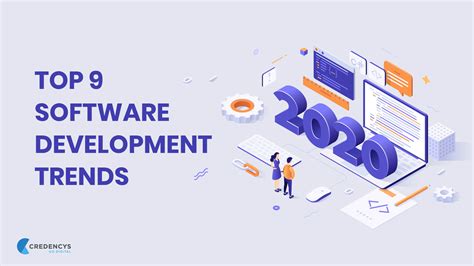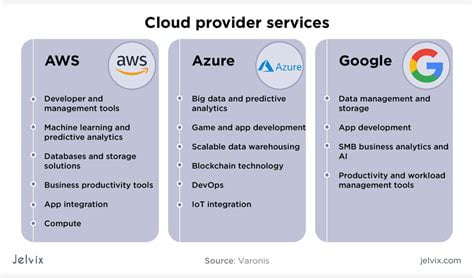Use big data to your advantage and unlock the potential of your business. With the right tools and strategies, you can turn massive amounts of data into valuable insights that can help you make informed decisions and improve your bottom line.
The Three Vs of Big Data
Big data is characterized by its volume, velocity, and variety. It involves collecting and analyzing large amounts of data from different sources to gain insights that are not possible with traditional data analysis methods.
The Benefits of Big Data
Big data can help organizations in various ways, such as improving customer experience, optimizing operations, reducing costs, and increasing revenue. It enables businesses to uncover patterns, trends, and relationships that would otherwise go unnoticed.
The Challenges of Big Data
While big data offers many opportunities, it also poses several challenges, such as data quality and security issues, technical complexity, and the need for skilled professionals. Organizations must address these challenges to fully realize the benefits of big data.
The Role of Data Analytics
Data analytics is a crucial component of big data. It involves using statistical and computational techniques to explore and analyze data, identify patterns and trends, and extract useful insights. Effective data analytics can help organizations make better decisions and achieve their goals.
The Importance of Data Governance
Data governance refers to the processes, policies, and standards that organizations use to manage their data assets. It ensures that data is accurate, consistent, and secure, and that it complies with relevant regulations. Proper data governance is essential for effective big data management.
The Role of Machine Learning
Machine learning is a branch of artificial intelligence that involves developing algorithms that can learn from data and make predictions or decisions based on that learning. Machine learning can help organizations automate and optimize various processes, such as fraud detection, customer segmentation, and product recommendations.
Define Your Objectives
Before you start collecting and analyzing data, you need to define your objectives. What do you want to achieve with big data? What questions do you want to answer? What decisions do you want to make? By clarifying your goals, you can focus your efforts and resources on the areas that matter most.
Identify Your Data Sources
Big data can come from various sources, such as social media, customer interactions, website traffic, and IoT devices. Identify the sources that are relevant to your objectives and ensure that you have the necessary tools and technologies to collect and store the data.
Clean and Prepare Your Data
Big data is often messy and unstructured, which can make it difficult to analyze. Before you can use it, you need to clean and prepare it. This involves removing duplicates, correcting errors, standardizing formats, and transforming data into a usable format.
Choose the Right Tools and Technologies
There are many tools and technologies available for big data management and analytics, such as Hadoop, Spark, and Tableau. Choose the ones that best fit your needs and budget, and ensure that you have the necessary skills and expertise to use them effectively.
Apply Analytics and Machine Learning Techniques
Once you have cleaned and prepared your data and chosen the right tools, you can start applying analytics and machine learning techniques to gain insights and make predictions. This involves selecting the appropriate algorithms, testing and refining them, and interpreting the results.
Use Insights to Drive Action
The ultimate goal of big data is to drive action. Use the insights and predictions you have gained to make informed decisions, optimize processes, and improve performance. Monitor your results and adjust your strategies as needed.
What is big data?
Big data refers to the large and complex sets of data that are generated from various sources and require advanced tools and technologies to analyze.
Why is big data important?
Big data can help organizations gain valuable insights, improve decision-making, and achieve their goals more effectively and efficiently.
What are some common sources of big data?
Common sources of big data include social media, customer interactions, website traffic, IoT devices, and sensors.
What are some common challenges of big data?
Common challenges of big data include data quality and security issues, technical complexity, and the need for skilled professionals.
What is data analytics?
Data analytics is the process of using statistical and computational techniques to explore and analyze data, identify patterns and trends, and extract useful insights.
What is data governance?
Data governance refers to the processes, policies, and standards that organizations use to manage their data assets and ensure their accuracy, consistency, and security.
What is machine learning?
Machine learning is a branch of artificial intelligence that involves developing algorithms that can learn from data and make predictions or decisions based on that learning.
What is the ultimate goal of big data?
The ultimate goal of big data is to drive action and improve business performance through informed decision-making and optimized processes.
Using big data can offer many benefits, such as:
- Improved decision-making
- Better customer experience
- Optimized operations
- Reduced costs
- Increased revenue
- Enhanced competitiveness
To get the most out of big data, consider the following tips:
- Define your objectives and focus on the most important questions
- Choose the right data sources and ensure their quality and relevance
- Clean and prepare your data before analyzing it
- Choose the right tools and technologies for your needs
- Collaborate with experts and stakeholders to gain insights and drive action
- Continuously monitor and evaluate your results and adjust your strategies as needed
Big data can be a powerful tool for organizations that want to gain valuable insights and improve their performance. By understanding the basics of big data, defining clear objectives, choosing the right data sources and tools, and applying analytics and machine learning techniques, businesses can unlock the potential of their data and drive action. With proper data governance and collaboration, big data can help organizations stay competitive and achieve their goals more effectively and efficiently.
 Eltupe Technology And Software Updates
Eltupe Technology And Software Updates



